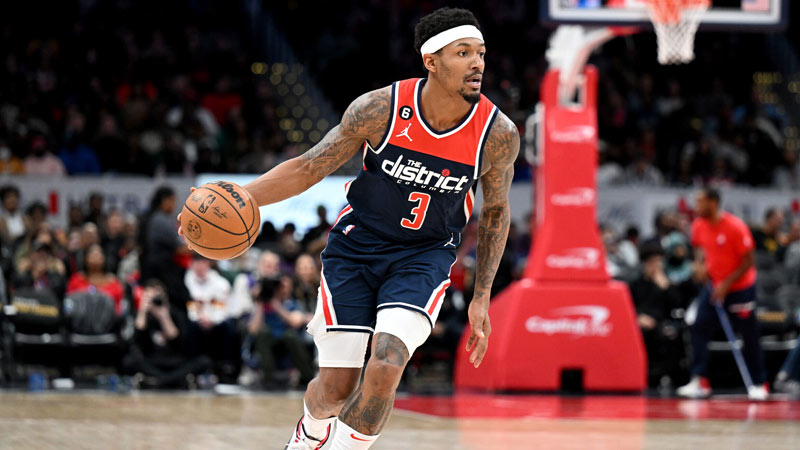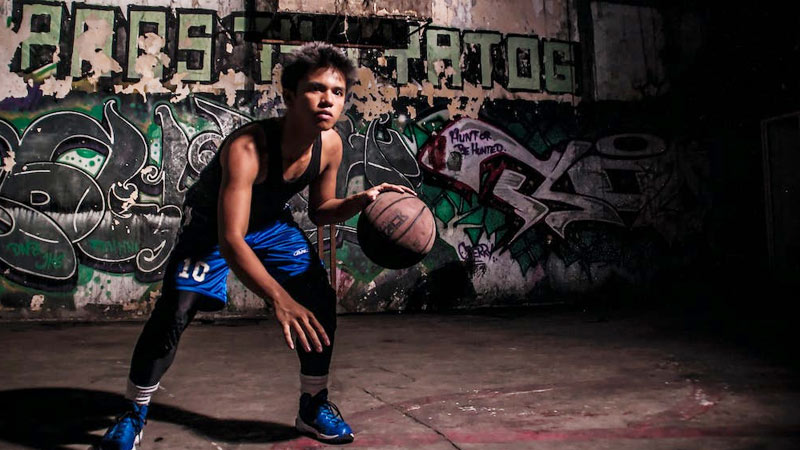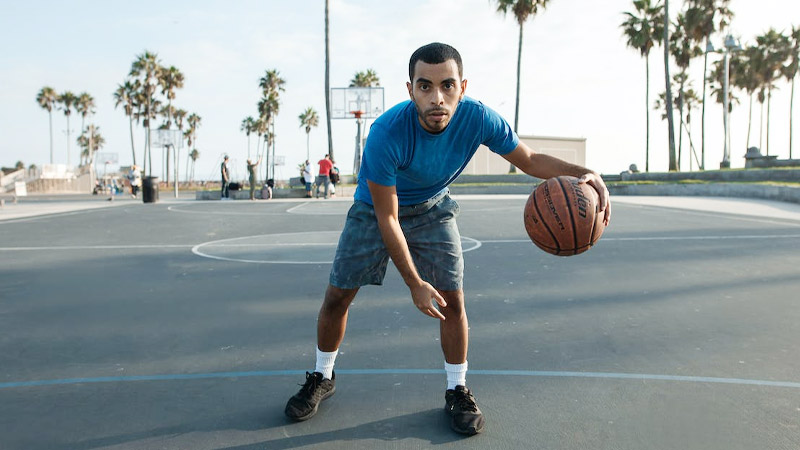In the fast-paced and dynamic game of basketball, having exceptional ball-handling skills, commonly referred to as “handles,” is a valuable asset.
The ability to control the ball with precision, speed, and creativity not only enhances a player’s individual performance but also contributes to the overall success of the team.
This article explores the importance of handles in basketball, delves into the fundamental techniques of ball handling, and provides a comprehensive guide on how to improve your handles.
Whether you’re a beginner looking to enhance your dribbling skills or an experienced player aiming to take your handles to the next level, these tips and drills will help you develop the necessary foundation and elevate your game.
Importance of Handles in Basketball
Handles are a fundamental aspect of basketball that directly influences a player’s ability to navigate the court, penetrate defenses, create scoring opportunities, and make accurate passes.
Strong ball-handling skills provide players with the confidence and control necessary to overcome defensive pressure, maintain possession, and execute offensive strategies.
Additionally, exceptional handles enable players to showcase their creativity and improvisation, opening up possibilities for dazzling moves and highlight-reel plays.
Whether you’re a guard, forward, or center, having solid ball-handling skills enhances your versatility and value as a player, making you a more well-rounded and effective contributor to your team’s success.
Navigating the Court with Precision
Effective ball handling allows players to move smoothly and quickly across the court, effortlessly changing directions and maintaining control of the ball.
It enables players to navigate through tight spaces, evade defenders, and find open teammates.
Strong handles provide the foundation for effective dribbling techniques, such as crossovers, hesitation moves, and behind-the-back dribbles, which create opportunities for drives to the basket or pull-up jump shots.
Breaking Down Defenses and Creating Scoring Opportunities

Source: arizonasports.com
Superior ball-handling skills are essential for breaking down defenses. Players with exceptional handles can confidently attack the rim, utilizing dribble penetration to draw defenders and create scoring opportunities for themselves or their teammates.
By effectively using dribble moves and changes of speed, players can create space for open shots, layups, or dunks.
Facilitating Accurate Passes and Effective Team Play
Handles not only enhance a player’s individual scoring ability but also contribute to effective team play.
Strong ball-handling skills allow players to make precise and accurate passes, including flashy no-look passes or wraparound feeds, which can catch defenses off-guard and lead to easy scoring opportunities.
A player with solid handles becomes a reliable playmaker, capable of distributing the ball effectively and making the right decisions under pressure.
Confidence in Overcoming Defensive Pressure
In basketball, defenders often employ various defensive strategies to disrupt offensive flow and force turnovers. However, players with excellent ball-handling skills are better equipped to handle defensive pressure.
With strong handles, players can confidently dribble through traps, double teams, and full-court presses, minimizing turnovers and maintaining possession.
This ability to remain composed under pressure is invaluable and allows players to dictate the tempo of the game.
Unleashing Creativity and Showcasing Dazzling Moves
Ball-handling skills provide players with the freedom to express their creativity on the court.
A player with exceptional handles can unleash a wide array of dribble moves, such as crossovers, spins, and hesitation dribbles, to deceive defenders and create highlight-reel plays.
These dazzling moves not only electrify the crowd but also demoralize opponents, giving the player an additional psychological advantage.
What Are the Fundamentals of Ball Handling?

Before delving into specific techniques and drills, it is essential to have a solid grasp of the fundamental principles of ball handling.
These principles serve as the building blocks for effective dribbling and lay the foundation for executing advanced maneuvers with finesse.
By understanding and honing these key fundamentals, players can enhance their control, minimize turnovers, and navigate through defensive pressure with ease. Let’s explore the crucial principles of ball handling in detail:
Hand Position
Maintaining the correct hand position on the ball is vital for optimal control and feeling. To achieve this, players should keep a relaxed grip, spreading their fingertips evenly across the surface of the ball.
This grip provides better touch and enables quick adjustments while dribbling.
Dribble Height
The height at which you dribble the ball should be adjusted based on the situation. Keeping the ball low to the ground helps minimize turnovers by making it harder for defenders to steal.
It also allows for quicker changes of direction. On the other hand, raising the ball higher provides better court vision, enabling players to scan the surroundings and make accurate passes.
Control and Protect
To maintain possession and shield the ball from defenders, it is crucial to position your body between the defender and the ball. Utilize your off-hand as a guide to protect the ball and create a physical barrier against potential steals.
By mastering this technique, you can effectively navigate through traffic and avoid turnovers.
Speed and Change of Pace
Varying your dribble speed is a powerful tool for keeping defenders off balance. By utilizing quick bursts of speed or sudden changes of pace, you can create separation from defenders, attack the basket with precision, or set up teammates for open shots.
The ability to change speed and direction at will is a hallmark of exceptional ball handlers.
Vision and Awareness
Maintaining excellent court vision and awareness while dribbling is crucial. Develop the skill of dribbling while keeping a wide field of vision, allowing you to simultaneously observe defenders, open teammates, and potential passing lanes.
This awareness enables you to make split-second decisions, exploit defensive gaps, and deliver accurate passes when opportunities arise.
How to Improve Your Handles in Basketball?
Improving your handles requires a combination of focused practice, discipline, and determination. Here are essential steps to enhance your ball-handling skills:
Essential Drills to Improve Handles
Incorporate various dribbling drills into your training routine to improve your coordination, ball control, and dribbling techniques.
Some key drills include stationary dribbling drills, cone drills, two-ball drills, and full-court dribbling drills.
These exercises enhance your ability to handle the ball in different situations and under various levels of pressure.
Developing Weak Hand Dribbling
Developing proficiency with your non-dominant hand is crucial to becoming a well-rounded ball handler. Dedicate focused practice time to improve your weak hand dribbling through dribbling exercises, drills, and game-like situations.
Gradually increase the difficulty level to challenge your weak hand and improve its capabilities.
Utilizing Basketball Training Aids
There are various basketball training aids available that specifically target ball-handling skills. Tools like dribble goggles, weighted basketballs, and dribble gloves can enhance your muscle memory, coordination, and touch. Incorporate these aids into your training sessions to improve your handles.
Getting Game SituationalTraining
To fully translate your ball-handling skills to game situations, incorporate game situational training into your practice routine.
Simulate real-game scenarios, such as one-on-one or pick-and-roll situations, to practice handling the ball under pressure and making quick decisions.
This type of training helps you develop the ability to handle the ball effectively in dynamic and unpredictable situations.
Having a Mental Aspect of Ball Handling
Ball handling is not solely a physical skill—it also requires mental sharpness and focus. Develop mental toughness by visualizing successful dribbling scenarios and building confidence in your abilities.
Stay calm and composed in high-pressure situations, trust your instincts, and anticipate the movements of defenders. Building mental resilience enhances your ball-handling effectiveness.
Additional Tips to Improve Your Handles in Basketball
Watch and learn from professional players known for their exceptional handles. Analyze their techniques, footwork, and dribbling patterns, and incorporate elements into your own practice sessions.
Incorporate strength and conditioning exercises to improve your hand and forearm strength, which enhances your grip on the ball and control while dribbling.
Seek feedback from coaches or experienced players to identify areas for improvement. They can provide valuable insights and correct any technical errors in your dribbling mechanics.
Practice dribbling with your eyes closed or in front of a mirror to enhance your proprioception and develop a better feel for the ball.
Push yourself out of your comfort zone by challenging yourself with new and advanced dribbling moves. Experiment with crossovers, behind-the-back dribbles, and hesitation moves to expand your repertoire of dribbling techniques.
FAQs
How long does it take to improve ball-handling skills?
Improvement in ball-handling skills varies from person to person. Consistent practice over several months, focusing on drills and game-like situations, can lead to a noticeable improvement in your handles.
Can ball-handling skills be improved at any age?
Yes, ball-handling skills can be improved at any age. It requires consistent practice and dedication to develop and refine your ball-handling techniques.
How often should I practice ball handling?
To see a significant improvement, aim to practice ball handling at least three to four times a week. Consistency is key in building muscle memory and improving your handles.
Can I improve my handles without a basketball court?
While having access to a basketball court is ideal, you can still improve your handles without one.
Practice dribbling drills in open spaces, use smaller basketballs or even tennis balls to enhance hand-eye coordination and focus on dribbling techniques and footwork.
Are there any specific stretches or warm-up exercises for ball handling?
Performing wrist stretches, forearm stretches, and finger stretches before your practice session can help prepare your muscles and joints for ball handling.
Additionally, incorporating dynamic warm-up exercises such as arm circles and lunges can improve blood flow and enhance overall performance.
Bottom Line
Improving your handles in basketball requires dedication, consistent practice, and a focus on the fundamentals.
By incorporating drills, developing weak hand dribbling, utilizing training aids, and engaging in in-game situational training, you can enhance your ball-handling skills.
Remember to work on the mental aspect of ball handling and implement additional tips to further elevate your game.
Developing exceptional handles not only boosts your individual performance but also strengthens your team’s offensive capabilities.
So, commit to improving your handles, put in the necessary work, and watch your ball-handling skills flourish on the basketball court. Thank you.







